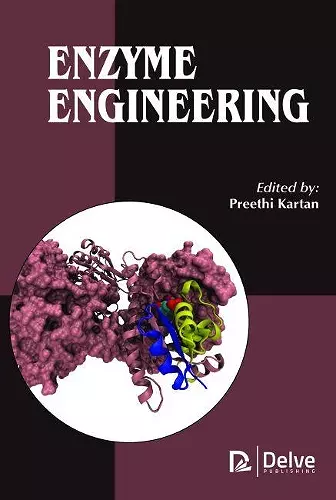Enzyme Engineering
Format:Hardback
Publisher:Arcler Education Inc
Published:28th Feb '18
Should be back in stock very soon

Enzymes can be regarded as the catalysts of nature that controls the rate of a wide range of biochemical reaction often with perfection. The agriculture, chemical, food and pharmaceutical industries have been immensely benefited by applying enzymes in their production processes due to the non-toxic nature, low energy input, reduced processing time, economic viability and eco-friendly attributes of enzymes.
For centuries, the common commodities like vinegar, wine, bread, etc. have been manufactured using microorganism with tremendous biocatalytic potential. However, a better understanding of the biochemical basis was still lacking.
Mobilizing enzymes for various purposes generally necessitate engineering them for enhanced activity and improved stability. In this regard introduction of genetic engineering techniques in enzyme technology have been one of the most exhilarating developments in the last few decades. Enzyme engineering is nothing but the amendment of an enzyme structure, thereby modifying its functions and catalytic activities to form novel metabolites. This further allows conversion of biotransformation processes and catalyzing reactions to develop some of the unexplored biochemical pathways.
Genetic engineering technique aims to improve or modify enzyme properties such as the kinetics or the yield and effortless downstream processing. It can also enhance a range of issues related to safety and enables cloning of enzymes that are extracted from harmful or pathogenic microbial sources or from limited animal or plant tissues into safe and stable microbes. The engineering technique may also lead to redesign the enzymes for enhancing its potential for industrial application.
Enzymes are usually large molecules (molecular mass ranging from kilodalton for insulin to megadalton for ribosomes), comprising of amino acid polymers connected by amide bonds. The substrate specificity is determined by the catalytic site of the macromolecules, which are often hidden within hydrophobic pockets. The classification and nomenclature of an enzyme are generally based on its specificity to catalyze various chemical and biochemical reactions. In the 1940s, the field of biochemistry flourished immensely with many distinguished achievements that led to the isolation and characterization of several enzymes. This necessitated the standardization of the enzyme nomenclature. Consequently, the International Union for Pure and Applied Chemistry (IUPAC) along with the International Union of Biochemistry and Molecular Biology (IUBMB) came forward to set up an Enzyme Commission (EC) to conduct the...
ISBN: 9781773611068
Dimensions: unknown
Weight: unknown
275 pages